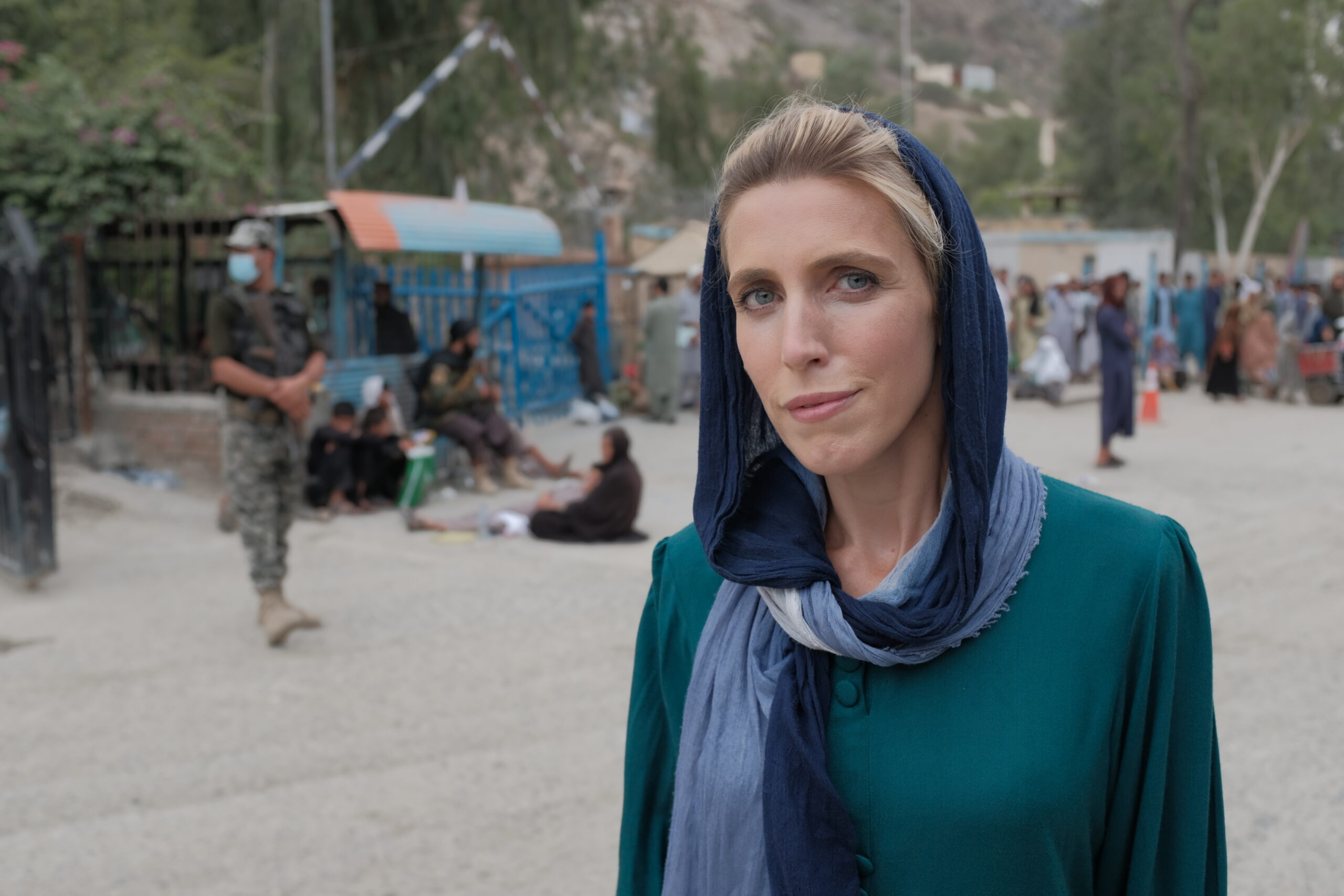CNN’s Clarissa Ward on Covering the Taliban, Interviewing ISIS Commanders, and What’s Next For Afghanistan

William Bonnett/CNN
Clarissa Ward wants to go back to Afghanistan, where her remarkable reporting on the collapse of the government and takeover by the Taliban after the withdrawal of U.S. troops established CNN as the network to watch for coverage of the conflict.
But her interview with a leader of ISIS-K has made that difficult.
In the aftermath of a bombing attack outside Kabul airport that killed 13 U.S. troops and 170 Afghans, Ward interviewed a senior commander of the insurgent group responsible for the attack. Following that interview, a colleague, Afghan filmmaker and journalist Najibullah Quraishi, recommended she take a break from reporting on the country.
“Maybe just wait a bit before coming back,” Ward said her colleague advised, “because a lot of people are talking about it and it’s all over social media. And your profile is really high right now.”
Ward — CNN’s chief international correspondent, author of the book On All Fronts, and host of the upcoming CNN podcast Tug of War — is my guest on this week’s episode of The Interview podcast.
Ward arrived in Afghanistan on August 2 for what was meant to be a two-week reporting trip covering the withdrawal of U.S. troops after two decades of war.
She ended up staying in Afghanistan for three weeks, embedding with the Afghan military just before its collapse, and covering the Taliban up close as it swept through the country and eventually took control of Kabul.
The change in leadership in Kabul was notably and ominously marked, for American news watchers at least, by a change in dress. When Ward appeared on CNN to interview the newly victorious Taliban fighters, she was cloaked in a black abaya and a hijab.
“This was how I had always dressed when I was with the Taliban,” said Ward. “Even then, it’s not like I was seen by the Taliban as dressing conservatively at all. You heard them saying to me on a number of occasions to cover my face, they didn’t want to walk down the street with me, or whatever.”
“I guess my calculation was that if I’m going to get up in this guy’s face and push him on women’s rights or why he’s carrying a truncheon or a whip, then I need to be able to — in order to even have that conversation, I need to be dressed in a certain way,” she said.
Despite a general feeling of intimidation, Ward said the Taliban fighters outside the U.S. embassy in Kabul were mostly “relaxed” and “jubilant.”
The scene outside the airport, however, was a different matter.
“We had a really nasty run-in with a couple of them,” she said. “My producer, Brent Swails, very nearly got pistol-whipped and they were super aggressive. And the guy was shouting at me to cover my face and he didn’t want to talk to me.”
Ward explained that while Taliban leadership has sought to convey a newfound tolerance for Western journalists, the rank and file doesn’t always get the memo.
She said that one of the Taliban fighters appeared to be “high on something,” and that “you couldn’t reason with them.”
“It was like the lights were on, but there was no one home. They were just in a rage. And so you’re like literally shouting at them, we’re journalists, we’re journalists!”
Video of the incident aired by CNN showed one Taliban fighter raising the butt of his rifle to strike Swails. Somehow, the CNN crew managed to diffuse tensions and leave unscathed.
Ward and her crew managed to leave Afghanistan, on a flight bound for Doha that took off as the U.S. scrambled to evacuate Americans and their Afghan allies that remained in the country. Getting onto a plane was an ordeal, Ward said.
“We got there at about 7 in the morning and we got out at about 3 in the morning. So it took us about 20 hours,” she explained. “What was sort of overwhelming was just to see what a desperate and chaotic situation it was for Afghans who had been waiting there, some of them for two days, who had small children and babies with them. There weren’t a lot of things like shelter from the heat, from the sun. Marines were handing out little strips of cardboard to people to fan themselves with.”
Despite her remarkably intrepid reporting (in addition to Afghanistan, Ward has covered wars in Syria and Iraq, and confronted a Russian FSB agent suspected of poisoning Alexey Navalny) she said she remains cautious in her assignments, and her primary concern is coming home to her two young sons.
“It’s all relative, right?” Ward replies when I ask how she can describe herself as risk-averse. “I’m willing to go to war zones or wherever I need to go to tell the story of the people who are living at the center of that.”
“What I meant is I’m not very comfortable in situations where I’m on an active front line and they’re shooting around me, or there’s an active battle going on, or regular airstrikes. I hate airstrikes. They make me feel just absolutely petrified. Or shelling — all of that stuff. I’ve gone through it, more than my fair share.”
“Shelling is kind of a mind game,” she said. “You just can’t escape this crippling fear that the next thud could be on the house that you’re in.”
Also in the episode: We discussed how Ward got her start in journalism, where her reporting will take her next, and Tug of War, her upcoming CNN podcast which will examine the rise of autocracies across the globe and the grassroots resistance movements that meet them.
Download the full episode now, and subscribe to The Interview on Apple Podcasts or Spotify.